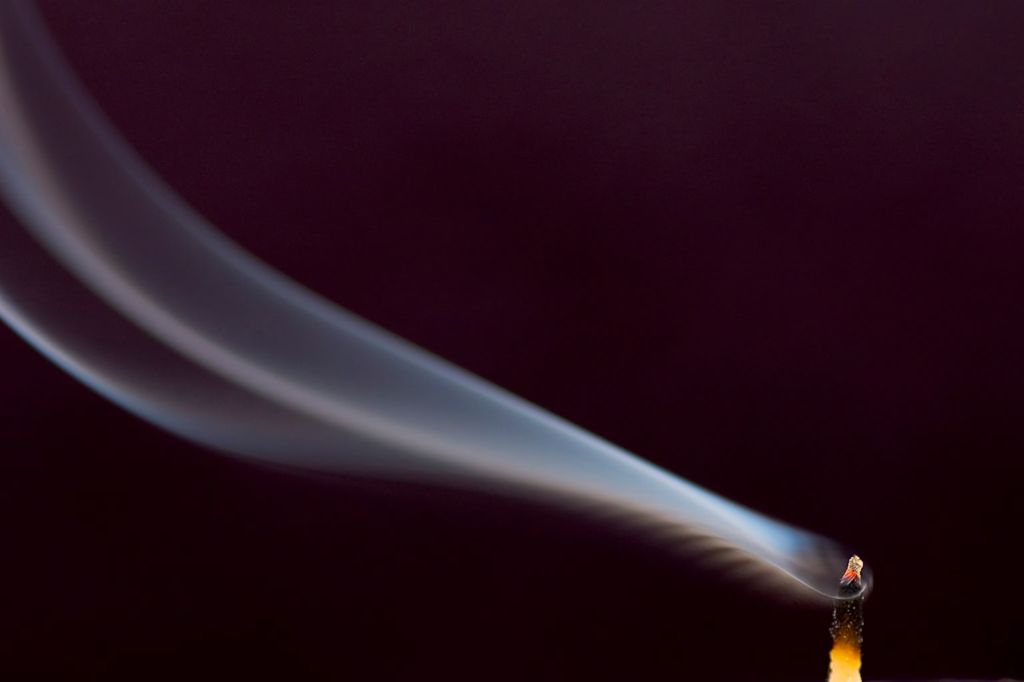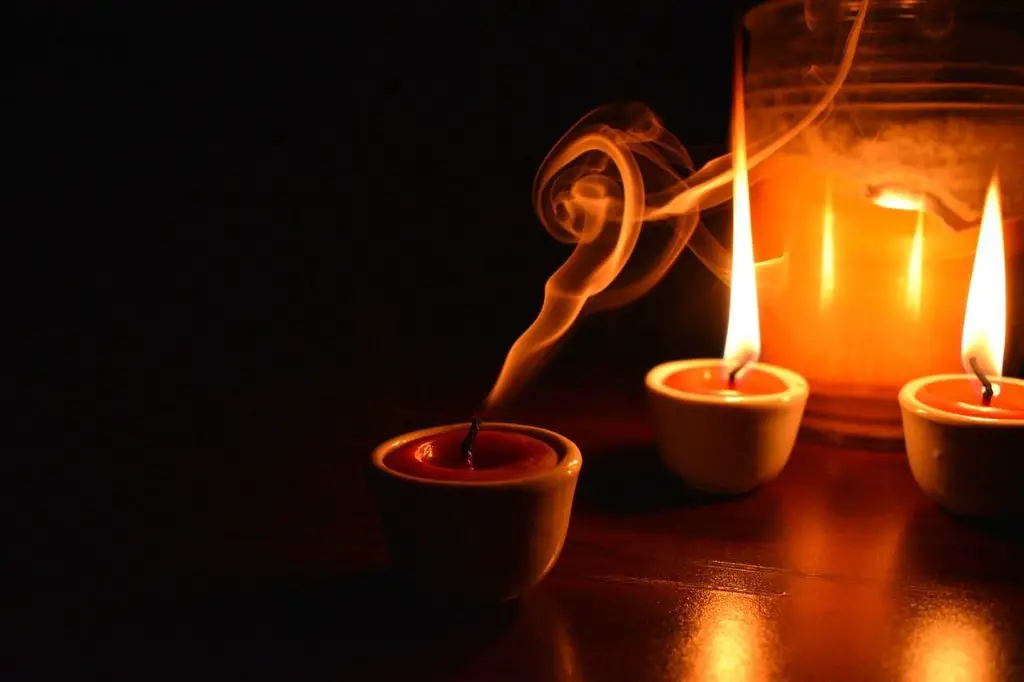Can Breathing In Candles Make You Sick?
There has been growing concern around the potential health impacts of breathing in candle emissions or fumes. When candles are burned, they release volatile organic compounds (VOCs), particulate matter, and other chemicals into the air. Some wonder if inhaling these substances from candles can cause or exacerbate health problems.
Candles, especially scented candles, have surged in popularity in recent years. With more usage comes more questions around safety and whether breathing in candle fumes carries risks. This article will analyze the latest scientific research to understand what’s actually released from candles when burned, examine if candle emissions pose legitimate health hazards, and provide tips for safe usage.
What’s in Candle Smoke?
The primary components of candle smoke include:

- Soot – These are tiny particles of unburned carbon that give candle smoke its grayish appearance. Soot makes up the majority of candle emissions. According to a Candle Science article, most candles produce very little soot because of advances in wick technology.
- Volatile organic compounds (VOCs) – These are carbon-based compounds like formaldehyde, benzene, and toluene that evaporate at room temperature. VOCs are released from the wax, wick, and any scented additives. Studies show scented candles emit more VOCs than unscented ones.[1]
- Polycyclic aromatic hydrocarbons (PAHs) – PAHs are released when the candle wick smolders after the flame goes out. Like VOCs, PAHs are associated with the scented additives in candles.[1]
In addition to chemical emissions, candle smoke contains ultrafine particles smaller than 2.5 microns that can penetrate deep into the lungs.
Potential Health Effects
While occasional candle usage is unlikely to cause major health issues in most people, there are some potential risks from inhaling the chemicals released from burning candles. The smoke and soot from candles contain fine particles that can irritate the eyes, nose, throat, and lungs, especially in those with respiratory conditions like asthma or allergies (1).

Common symptoms from candle smoke exposure include coughing, wheezing, chest tightness, nasal congestion, sneezing, sore throat, and irritated or watery eyes. Those with asthma may experience worsened symptoms or asthma attacks from breathing in candle emissions. The particulate matter in candle smoke can also aggravate chronic lung diseases like COPD or emphysema (2).
In addition to particulate matter, the volatile organic compounds (VOCs) released from scented candles can provoke allergic reactions or breathing difficulties in some. For those with fragrance or scent allergies, the chemicals emitted from scented candles can trigger headaches, breathing problems, skin irritation, nausea, and other allergy-like symptoms when inhaled (3).
While most occasional candle usage has not been linked to major respiratory damage or illness, studies suggest limiting exposure from heavy usage or burning multiple candles at once, which increases the concentration of potentially harmful chemicals and particles (4). Sensitive groups like children and the elderly may be at higher risk from the lung-irritating effects of candle smoke.
Studies on Candle Emissions
Several scientific studies have analyzed the emissions from burning candles and potential health effects. A 2023 study published in the journal Environmental Science and Pollution Research examined air samples in homes that used scented candles frequently. The researchers found increased levels of potentially hazardous volatile organic compounds (VOCs) like acetone, acetaldehyde, and formaldehyde compared to homes that did not use scented candles [1]. However, the levels were generally below established exposure limits.
One 2021 study tested emissions from paraffin, soy, and beeswax candles. Paraffin candles released the most soot and higher levels of some VOCs. Beeswax candles produced less soot but more formaldehyde than soy candles [2]. Overall, the health risks from occasional candle usage are likely minimal. But frequent exposure to combustion particles and VOCs can irritate lungs and worsen conditions like asthma.
Factors that Increase Risk
The longer a candle burns, the more potentially hazardous substances it emits into the air. According to a study from South Carolina State University, burning a candle for over 2 hours resulted in higher levels of benzene and toluene compared to shorter burn times [1]. Proper ventilation is key – burning candles in an enclosed space with no airflow allows volatile organic compounds to accumulate to much higher concentrations. Heavily scented candles also tend to release more chemicals. Look for candles made from natural soy, beeswax or vegetable-based waxes instead of paraffin wax, which is a petroleum byproduct. Lead-free cotton or paper wicks are preferable over metal-core wicks that can emit heavy metals when burned.

Sensitive Groups at Risk
Certain groups may be more sensitive to the emissions from candles and experience more severe health effects. These include:
Asthmatics
People with asthma can experience aggravated symptoms from candle smoke. The smoke contains particulate matter, VOCs, and other lung irritants that can trigger asthma attacks, wheezing, and shortness of breath (Al Khathlan, 2023). Asthmatics are advised to avoid burning candles or at least limit exposure.
Children
Children have smaller lung capacity and higher breathing rates compared to adults. This makes them more susceptible to irritation and inflammation from candle emissions (Cleveland Clinic, 2022). Parents should be cautious about burning candles regularly around infants and children.
Elderly
Older adults may also face heightened risks from candle pollution. Their lungs are generally less efficient at filtering out particles. Plus, they are more likely to have existing respiratory conditions that can be aggravated (Consumer Reports, 2023). The elderly should minimize candle burning or opt for cleaner alternatives.
Safety Tips
When burning candles, it’s important to take precautions to promote safety and reduce any potential health risks. Here are some key tips:

Ensure proper ventilation. Burn candles in a well-ventilated room with windows open or fans running to allow fresh air circulation. Avoid drafts that can cause rapid or uneven burning (https://candles.org/fire-safety-candles/).
Trim wicks to 1⁄4 inch before lighting to prevent excess smoke production. Long wicks create more soot. Trim wicks after every few hours of burning (https://candles.org/your-foolproof-guide-to-burning-a-candle-correctly/).
Use candles made from natural, non-toxic waxes like soy, beeswax or vegetable oils. These produce less soot than paraffin wax. Avoid dyes, fragrances and additives that can create more smoke (https://www.fmins.com/blog/candle-safety/).
Alternatives to Candles
For those concerned about potential health risks from candle emissions, there are several alternative options to consider that don’t involve an open flame. Some popular alternatives include:
LED Candles
LED candles provide flickering light that mimics the look of real candles without any smoke or scent. Made from plastic and battery-operated, LED candles emit no fumes or chemicals. They can be used anywhere conventional candles are used, like on tabletops, mantlepieces, and outdoor patios. According to blog.lafco.com, LED candles are a great option for safety and can last for years.
Wax Warmers
Wax warmers provide fragrance from melting scented wax or oils, without any flame. The wax or oil is heated by a light bulb or ceramic heating element. This produces scent but no smoke. According to apartmenttherapy.com, wax warmers allow you to experience fragrance without worrying about fire hazards, pooling wax, or black smoke marks.
Essential Oil Diffusers
Essential oil diffusers disperse fragrant essential oils into the air to scent a room. A diffuser uses ultrasonic vibrations, heat, or steam to diffuse the oils as a fine mist. Diffusers provide aroma without any flames, smoke, soot, or toxins. They also naturally humidify the air. Apartmenttherapy.com recommends diffusers as a cleaner and safer alternative to candles.
When to Be Concerned
If you experience symptoms like coughing, wheezing, headaches, dizziness, or nausea when around candle smoke, this may be a sign you have a sensitivity. People with asthma or other respiratory conditions should also be aware, as smoke can trigger attacks. One study found that scented candles aggravated asthma symptoms in more than 50% of participants. If you have any concerns about your reaction to candles, consider getting indoor air quality testing done in your home to measure pollutants.
Testing can detect concerning levels of fine particulate matter, volatile organic compounds (VOCs), and other chemicals released by candles. This allows you to make informed decisions about candle usage and ventilation needs. Pay special attention if you burn numerous candles daily or live in an air-tight environment. The EPA advises taking action when indoor air pollution is higher than outdoor levels.
Conclusion
Candle smoke contains small particles, volatile organic compounds, and other chemicals that can negatively impact health, especially with prolonged exposure. While occasional use may not be a major concern for most healthy individuals, those with lung conditions, children, pets, and the elderly can experience aggravated symptoms from breathing candle fumes.
To minimize risks, avoid burning multiple candles for long periods of time in unventilated areas. Always trim wicks, use candles cautiously, never leave them unattended, and extinguish them when leaving a room. Ventilate the space well while candles are lit and afterwards.
Safer options are using 100% beeswax or soy candles with cotton wicks, fragranced with essential oils instead of synthetic scents. Even better, consider flameless battery-operated candles for ambience without any emissions. Candles can be enjoyed safely and with peace of mind by following precautions.






